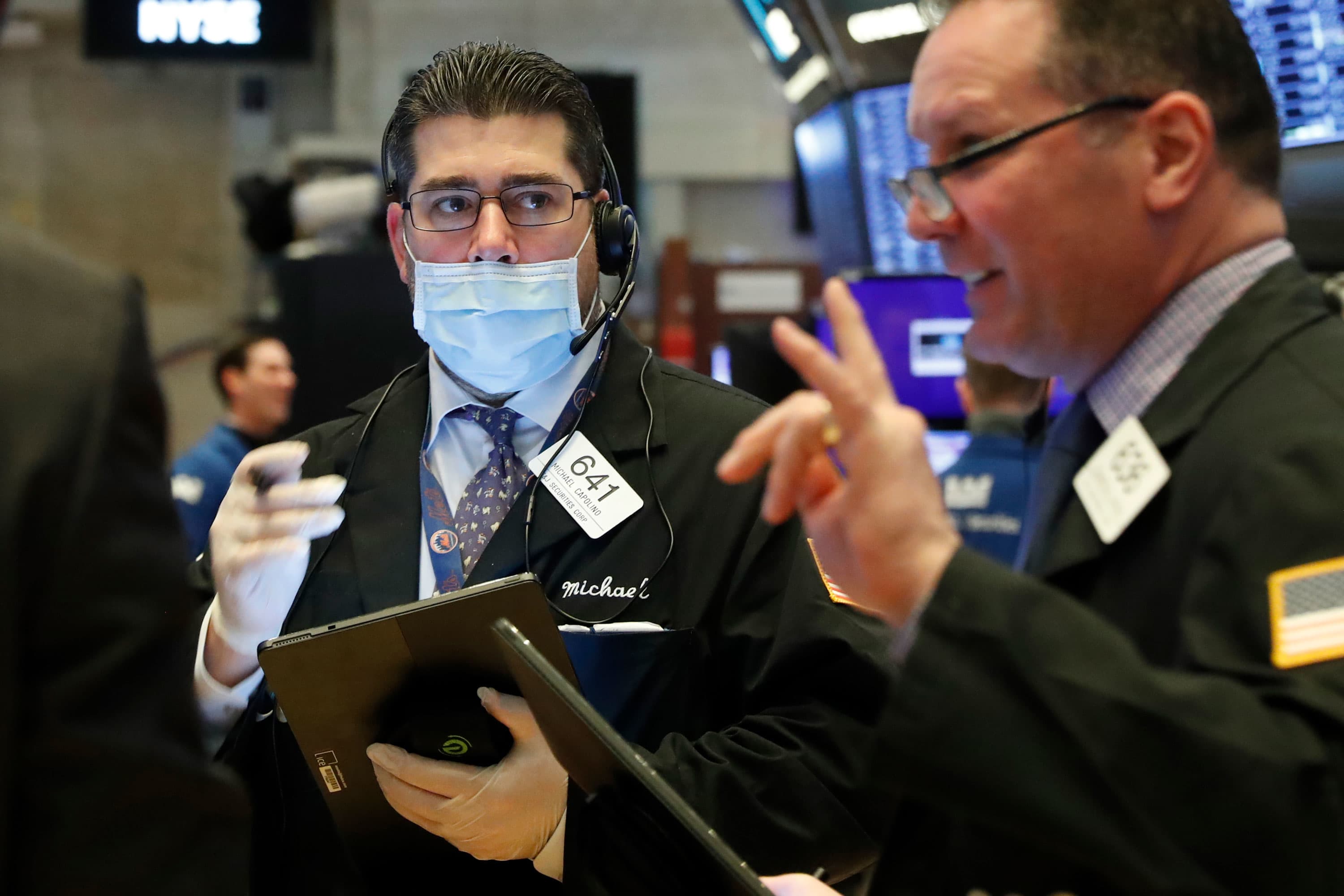
Investors still have a chance to get in on what could be a six- to 12-month market rebound, says one strategist.
The S&P and Dow Jones Industrial Average on Monday saw their best daily performance since Sept. 9.
With the S&P 500 and Nasdaq 100 rebounding from respective 10% and 15% declines, investors have more to be confident about now than when the market first fell 10% in early March, Canaccord Genuity strategist Tony Dwyer said Monday on CNBC’s “Trading Nation.”
There was a key certainty factor missing when the coronavirus outbreak spurred the first 10% leg lower, Dwyer said.
“Back then, you didn’t know even what Covid-19 was. You didn’t know how it was going to affect the economy. We were still in the process of wondering whether we should shut down, and we had no idea how the Fed was going to react,” he said.
“In this environment, we know exactly what the Fed is going to do because they explicitly told us. We also know that we’re in a global synchronized pivot higher off of very weak levels in the global economy and that really sets the stage for intermediate-term opportunity.”
In a note to clients last week, Dwyer predicted the Thursday bottom in U.S. stocks, saying the market was “passing over the first speed bump” on the way to recovery. In March, the initial 10% decline gave way to a nearly 40% plunge. This time would be different, he said.
“The question that I had to ask myself is, ‘Why do I want to buy weakness now when I didn’t want to buy it in early March?'” said Dwyer. “The answer is the fundamental backdrop is much better.”
Before the recent bounce, some of Dwyer’s tactical indicators were also signaling deeply oversold conditions and appeared to be “removing the excesses” that drove stocks to their September peak.
The S&P 500 had pulled back to its early June levels and the Nasdaq 100 returned to where it was in early July. Few stocks were above their 10- and 50-day moving averages and the Cboe Volatility Index, also known as the market’s fear gauge, was troughing.
While those indicators have stabilized since last week, investors with six- to 12-month time horizons still have a window of opportunity, the strategist said.
“What we rely on in the current environment are two things. Number one, we still have a historic amount of excess liquidity. Number two, we have a synchronized global recovery,” he said.
His sectors of choice were the so-called recovery trades: industrials, materials, financials and consumer-driven categories.
Those two catalysts — excess liquidity and the global economic inflection — should be enough to carry investors through the election, Dwyer said, adding that he saw it as an “uninvestable” event.
“I know we’re supposed to write these great think pieces about what’s going to happen in the political environment, what investors should do. How can you possibly make such an assessment?” he said.
“We don’t know who’s going to win, obviously,” he said. “It’s a pretty tight race. We don’t know if there’s going to be a Democratic sweep and we don’t know if either side will accept the results. How could you possibly construct a portfolio on such a guess? So, what you’re left with, again, are the two things that have been the driving force behind our bullishness since May: excess liquidity and a synchronized global recovery.”




